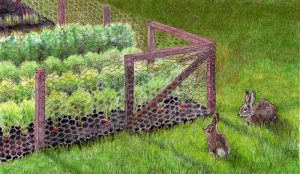
In spring, nature returns to the fray. In a short time, your garden comes alive with all its consequences. Are you ready to face the challenge? In this post, I will give you 8 basic garden maintenance jobs that you should never neglect. I will develop each point in the posts. Do not miss them!
Now is when they need the most food. Fertilize in late winter and early fall. Use well-composted organic fertilizers or slow-release granular fertilizers. These will give your plants the basic contribution of macroelements ( Nitrogen, Phosphorus, Potassium, Sulfur, Calcium and Magnesium ).
Basic garden maintenance
If necessary for any deficiency, you can also add more specific fertilizers in the form of chelates such as iron or copper. But the above is usually enough.

How to fight pests and diseases
With good weather, some problems can also appear for your plants, such as parasites or diseases. If you follow these recommendations, you will avoid being with the treatment backpack at all times.
Phytosanitary treatment backpack for the garden
Preparing the backpack for the phytosanitary treatment in the garden. To ensure that these problems do not recur every year, use plant species that are not very sensitive and well adapted to your garden’s conditions. Native species tend to work well. Make sure they have good conditions of light, soil, irrigation and food.
Be careful with irrigation and compost! The lack of water or nutrients causes weak plants more sensitive to the attack of pests. Too much nitrogen input favors the appearance of aphids. Too much humidity favors the appearance of fungus in the root. Be careful! If you still have unwanted guests, try other means before carrying out a pesticide treatment.
If you have aphids, for example, biological control gives very good results. Make a release of ladybugs and they alone will keep the infestation at bay. Potassium soap is another good alternative; In addition to being effective, it is an ecological product that does not cause harm to people or animals. Always think of insecticides as a last resort!
Automatic watering
When the heat arrives and depending on the type of garden, you will have to provide water regularly to compensate for the rain deficit. The higher evapotranspiration and less rain, logically, more often. Therefore, if you do not want to waste time with the hose, the ideal thing is that you consider the installation of automatic irrigation from the first moment. Automatic watering will give you the freedom to be away from home during the holidays.
The lawn for example, with a standard sprinkler installation, in summer is watered for approximately 30 minutes to give you an idea. As you can see,… automatic irrigation is necessary!
If you already have it installed, … check it in the spring to ensure everything is in order. Do some test start-up and look for leaks or obstructions in the irrigation emitters. Replace the programmer’s battery with a new one to get hung up when you go on vacation.
Lawn maintenance
It may be that your lawn, after winter, needs a little overseeding in some areas. This is something that you will have to value. What is clear is that from now on, you will have to go back to mowing more often, at least once a week in summer (somewhat less in spring and autumn).
The ideal height on a residential lawn is 5 cm. Try not to let it grow too much and if you do not cut more than a third at a time or you will weaken it. If necessary, make several mows until you reach the correct height. When the temperatures are very extreme, you can leave it a little higher to protect it.
How to multiply your plants
If you have a plant that you particularly like, you can multiply it with very simple techniques and get new specimens for your garden.
An easy way to get new plants is by cutting :
- Select a vigorous plant stem, neither too woody nor too tender.
- Cut below the bud diagonally.
- Remove the lower leaves and the flower if there is one.
- Place it in a moist substrate and the shade.
In a short time, if it does not lack moisture, it will take root and you will have a new plant identical to the old one.
If you have potted specimens, you can divide the plant: To do this, remove the pot and divide the root ball in two, stretching with your hands or with the help of scissors. Be careful not to damage the roots. This technique is very suitable for species with rhizomes.
Plant in the garden
Another satisfying job is undoubtedly planting new specimens. Perhaps not so much if we have had some loss with the winter frosts, but we are always excited to incorporate new plants into the garden. Take the opportunity to plant before the arrival of the heat. In this way, the plant will have more time to adapt and its roots will suffer less. Select species accustomed to weather conditions and make sure they have space and terrain necessary to develop. Remember, always, water your plant after finishing planting it.
A very common mistake is planting too much together in the garden, which often means sacrificing some plants to benefit others. Don’t make this mistake! Although at the beginning everything seems emptier… They will already grow!
Tree and shrub pruning
If you have recently planted the trees in your garden, you will have to prune them every year until you get the right size. The goal… a well-shaped glass at the desired height. This is called formation pruning. Once you have reached your goal, you will only have to carry out maintenance pruning to clean up the crown of dry, twisted branches or do not receive light. The same can be applied to shrubs, either to form a hedge or highlight an isolated specimen.





